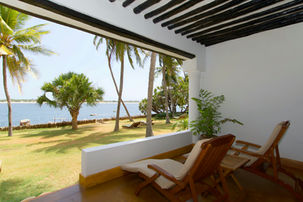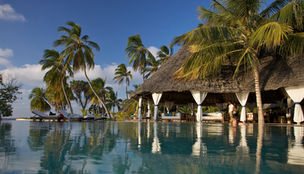KENYA
Kenya boasts huge landscapes and masses of wildlife, both in numbers and variety of species. The Masai Mara is famous for the Great Migration each year between late July and early October when millions of wildebeest, zebra and a few other antelopes traverse in search of grass from Tanzania’s Serengeti across into Kenya’s Masai Mara. The quest for grass never ends, and the migration can be witnessed in Tanzania at other times of the year.
Kenya’s high altitude big landscapes of Laikipia make it one of the most temperate places to go on safari. Cool mornings and evenings with warm days mean you can enjoy a host of activities perfect for those who are active, and for families. Some people hate sitting in a vehicle for hours on end and Kenya has some wonderful local guides. Walking safaris with Samburu tribesmen, horse riding, camel rides, fishing in mountain lakes and on the coast, camping under the stars, mountain biking, running and swimming in cool rivers all make Kenya a very unique active destination.
Meru National Park has some of the best birding in the country with hundreds of endemic species. With excellent wildlife such as lion, cheetah, hippos, crocodiles, elephants and lots more, Meru is a very untouched little park full of rivers and vegetation. You will hardly see another tourist here and this is where we choose to take our family camping to get away from it all.
Samburu has the most beautiful backdrop of mountains and lots of wildlife in more open scenery making it very good for photography.
Tsavo and Amboseli are also full of wildlife and Amboseli in particular is excellent for photography, sometimes dominated by Kilimanjaro in the background.
The Rift Valley Lakes of Baringo and Bogoria are stunning and Bogoria full of flamingos and incredible scenery. Visiting local Pokot tribes here is fascinating, meeting families living in the bush off cow’s blood and milk, and still wearing traditional clothing with huge stunning beaded necklaces.
You can climb Mount Kenya without any climbing experience, it can take as little as 3 nights and this is quite an achievement. You need to be relatively fit and well equipped. Alternatively you can stay in a log cabin half way up Mount Kenya, fishing in mountain lakes and hiking in the moorlands during the day. This is a secret getaway, much loved by many of us who live here. If you are keen on fishing then combine this with fishing between November and April on the Kenyan coast.
EAST AFRICAN COAST AND THE INDIAN OCEAN
The East African coast is blessed with white sandy beaches, some amazing historical towns such as Lamu and Zanzibar’s Stone Town and lesser known areas with small, boutique lodges and private houses. World class fishing for a day sailing on a wooden dhow with snorkels and fishing rods is the most peaceful way to witness some amazing parts of the Lamu archipelago. The East African coast draws you down to a slower beat of life watching fishermen sail around the islands in wooden sailing boats which have been part of this coastline for thousands of years.
Zanzibar, Pemba and Mafia islands can be combined with a safari in Kenya. Zanzibar is a vibrant island, home to Stone Town, once an important centre of East African trade with its own sultanate. Now whilst still a busy working centre, the island is full of beautiful hotels and resorts, and Stone Town itself has some exciting traditional houses you can stay in and experience the headiness of the spice centre of Africa, fascinating food and culture. If you are keen on diving or would like to learn, these islands have excellent diving in the coral reefs, and there are several dive schools here.
The Seychelles and Mauritius can easily be combined with a safari and reachable in a couple of hours from Nairobi. Glorious sea life and turquoise oceans, world class hotels and smaller guest houses make these destinations well worth spending a week or more in.















































